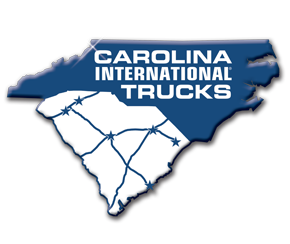Mastering the Art of Hitching a Semi-Trailer for Business Operations
Connecting a semi-trailer to a tow vehicle is a critical operation for any business relying on transportation. Ensuring a safe and secure hitch is not just about compliance; it's about protecting assets and maintaining operational efficiency. Whether managing a large fleet or a single vehicle, understanding the key steps in hitching a semi-trailer can significantly impact your business's productivity and safety record.
Preparing Your Equipment for Business Continuity
Before initiating the hitching process, a thorough equipment check is paramount for minimizing downtime. Inspect all tow vehicles and semi-trailers for potential issues that could lead to delays or accidents. Verify the fifth wheel's condition, ensuring it's clean and lubricated for optimal performance. Kingpin integrity is equally crucial; it should be free of rust and debris. This proactive approach to equipment maintenance is vital for ensuring uninterrupted business operations.
Aligning the Tow Vehicle for Operational Efficiency
Precise positioning of the tow vehicle is essential for a seamless hitching process, impacting overall operational efficiency. Guide the tow vehicle slowly towards the trailer, ensuring perfect alignment between the fifth wheel and kingpin. Utilize all available resources, including mirrors and spotters, to facilitate this alignment. Proper alignment minimizes the risk of equipment damage and speeds up the hitching process, keeping your business on schedule.
Engaging the Fifth Wheel for Secure Business Transport
With alignment achieved, engage the fifth wheel to ensure a secure connection for business transport. Lower the trailer landing gear until it makes light contact with the ground. Proceed to slowly reverse the tow vehicle until the kingpin engages with the fifth wheel's jaws, producing an audible click. A tug test is mandatory to confirm a secure connection, involving a gentle forward pull with the trailer brakes engaged. This step is critical for ensuring the safety of your business's cargo.
Securing Safety Features for Business Risk Mitigation
Implementing all safety features is crucial for mitigating business risks. Connect safety chains between the tow vehicle and trailer, ensuring they are crossed under the trailer tongue. Secure all electrical lines to guarantee the functionality of lights and signals, which is essential for compliance and safety. Verify the breakaway cable's secure attachment as a safeguard against emergency detachments. These safety measures protect your business from potential liabilities and ensure the safe transport of goods.
Final Checks Before Business Dispatch
Prior to dispatch, a comprehensive walk-around inspection is essential for preventing disruptions to your business operations. Verify all connections, inspect for any signs of wear or damage, and ensure all lights are operational. Check tire pressure to avoid delays and potential accidents. This final check is an integral part of your business's pre-trip routine, ensuring efficiency and safety.
At Carolina International Trucks, we understand the critical nature of safety and efficiency in business transportation. With six locations across South Carolina, we offer a comprehensive suite of trucking solutions designed to meet the demands of your business. Our dedicated team is committed to providing unparalleled service and support, enhancing your business's operational capabilities. Partner with us to optimize your trucking operations and ensure the highest standards of safety and efficiency.

